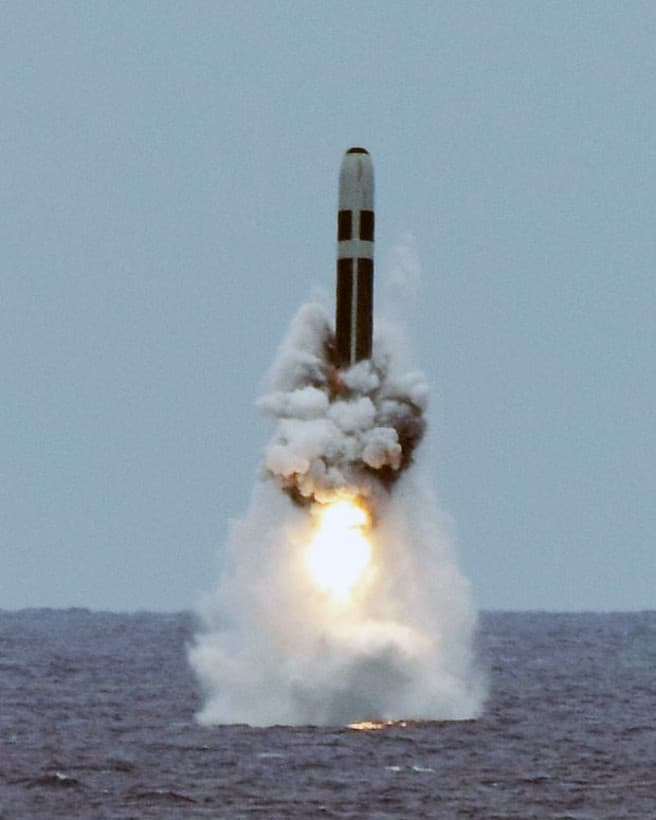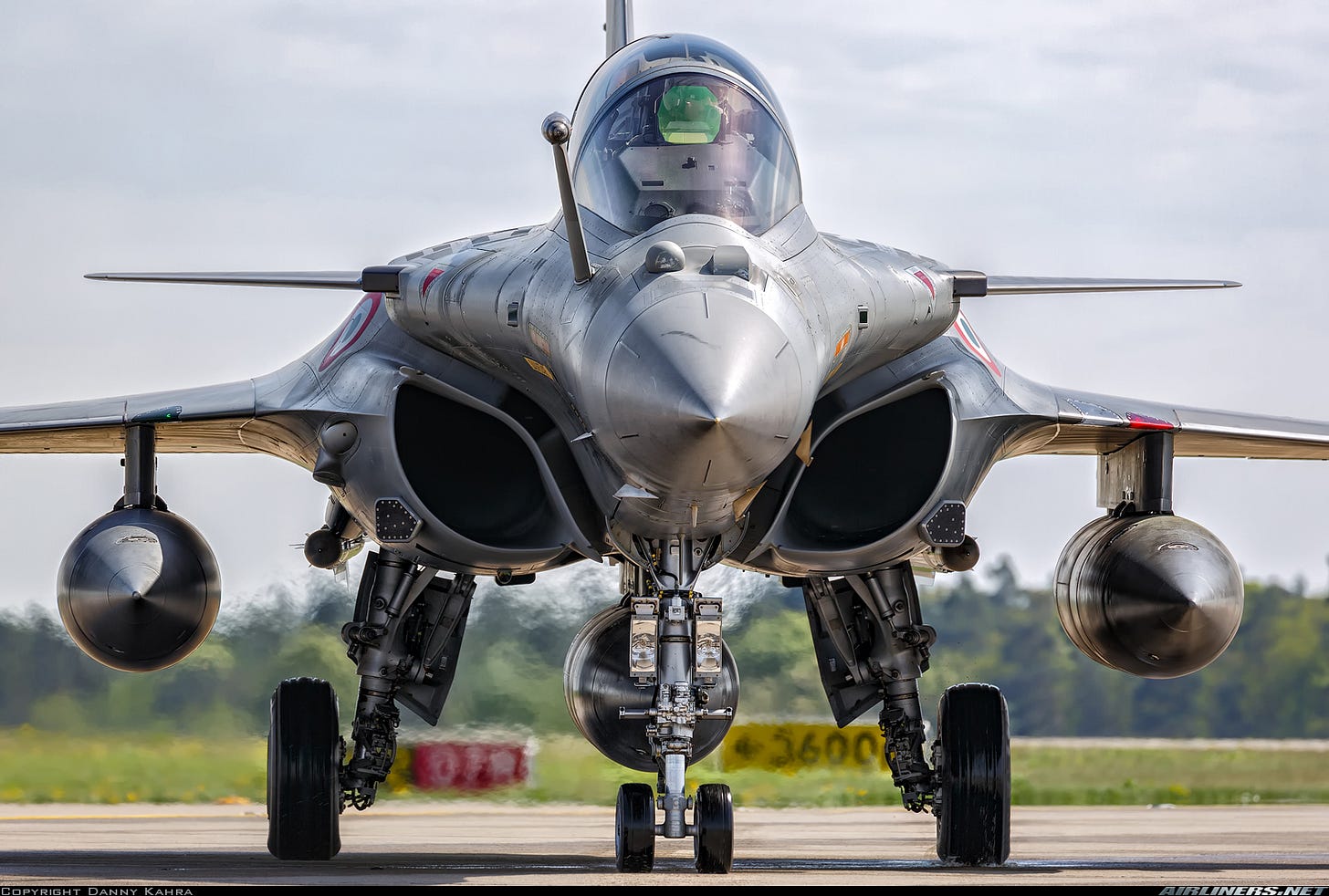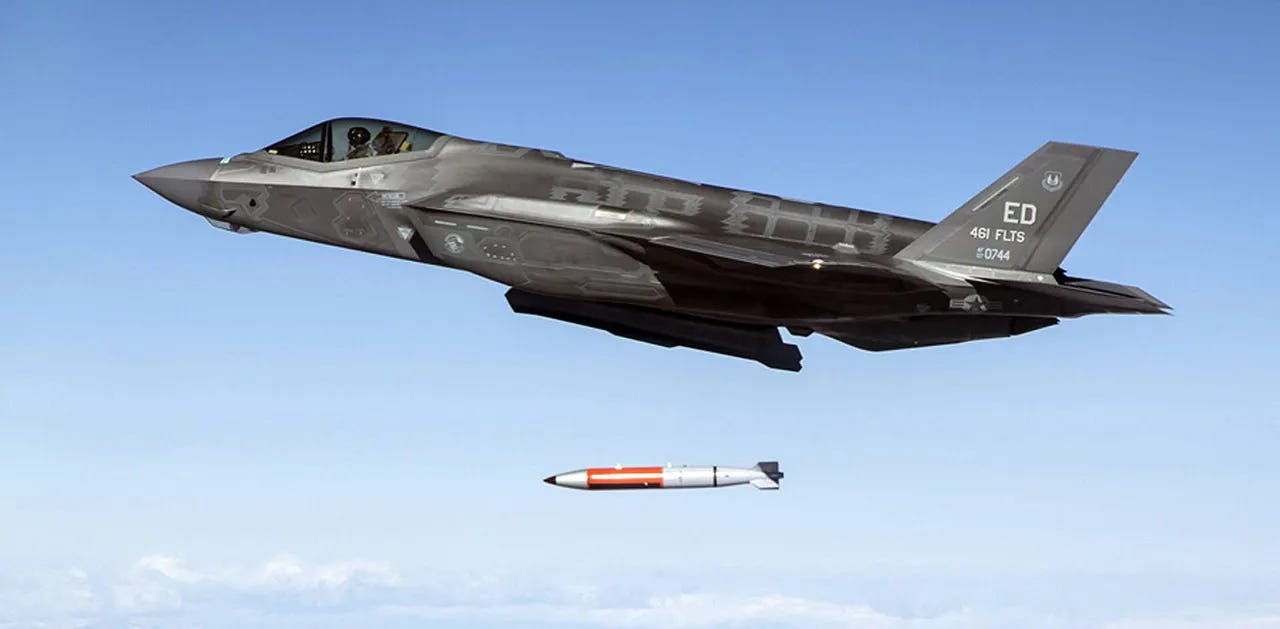The Northwood Declaration: A European Quest for Nuclear Deterrence
Not all it’s cracked up to be
French President Emmanuel Macron arrived in the United Kingdom for a three-day state visit. During this time, he met with King Charles III and Queen Camilla, attended a state banquet, and participated in wreath-laying ceremonies to honor Queen Elizabeth II, Winston Churchill, and Charles de Gaulle. President Macron delivered an address to both houses of the British Parliament and held meetings with Prime Minister Keir Starmer. The primary aim of the visit was to strengthen relations between the two countries, which are generally cordial and aligned but have experienced tension at times due to migration issues. A key outcome of the meetings was the signing of the Northwood Declaration on July 10, 2025. Both countries announced their commitment to using their nuclear arsenals to defend European interests in the event of a threat.
The Northwood Declaration was signed at the Northwood Headquarters, a key British military facility near London. The concept is not entirely new, as French President Macron began seriously proposing the idea in 2023 of deploying French nuclear weapons to defend European interests, rather than solely French interests. This proposal emerged in response to the Russian invasion of Ukraine and the subsequent nuclear threats from Russia against Ukraine and its allies in Europe. President Macron justified this shift in long-standing French policy—where French nuclear weapons were intended to defend only French interests—by asserting that European interests equate to French interests. Given the integration efforts spearheaded by the European Union, it is reasonable to understand his rationale for this change in the French position.
The suggestion made by President Macron was generally not embraced by European capitals or the European Union. Germany, under then Chancellor Olaf Scholz, rejected the idea of deploying French nuclear weapons on German soil. The sentiment in Eastern Europe was similarly lukewarm, although countries like Poland appeared to be more receptive to the deployment and certification of their F-35 Lightning II aircraft for delivering nuclear weapons. However, in Poland's case, the discussion focused on the potential stationing of U.S. nuclear weapons on their soil rather than French weapons.

The Northwood Declaration appears to be President Macron’s “second bite of the apple” and to co-opt the United Kingdom into its scheme. While it does not represent an immediate shift in policy, the declaration outlines a shared objective for both countries to collaborate on their nuclear capabilities in defense of Europe. The declaration specifies the following goals for both nations:
· Both countries will coordinate their nuclear deterrence and responses against “extreme threats” to Europe
· Both countries will respond to evolving threats such as sabotage, espionage, cyber-attacks and foreign interference
· Re-affirm and fully support the goals of the Non-Proliferation of Nuclear Weapons Treaty
· Establish a nuclear steering group to provide political direction for nuclear weapons cooperation and deterrence
o This group coordination will be led by the Presidency of the French Republic and Cabinet Office of the U.K.
· Address illegal migration
The first point of the declaration serves as the primary focus of this article and highlights the key accomplishments of President Macron’s state visit and leads the media coverage.
The United Kingdom has an acknowledged 225 nuclear warheads, with approximately 120 of them deployed. The country’s nuclear arsenal is entirely based on its four Vanguard-class nuclear submarines (SSBNs), which are armed with American-made and updated Trident II D5 submarine-launched ballistic missiles. These Trident II D5 missiles are owned by the United States and are only leased to the United Kingdom. While the United Kingdom’s nuclear capability operates independently of the U.S., it relies on U.S.-owned equipment and technology. Consequently, the U.S. will likely have a say in how the deterrent response outlined in the Northwood Declaration is utilized. Under the current Trump administration, this is probably not a concern, as the U.S. government seeks greater independence for Europe in its defense matters. However, this may not always be the case with future U.S. administrations that could favor increased American involvement in Europe.
The use of only an SSBN-deployed force means that the United Kingdom’s extension of nuclear deterrence will rely entirely on a political decision to extend the U.K.'s nuclear umbrella, without any physical demonstration of force, such as nuclear weapons deployments. This scenario also implies that there is no tangible guarantee from the U.K., only a statement of intent to act. Consequently, such a scenario could pose challenges in convincing allies of the U.K.'s commitment and may expose them to political pressure or coercion against taking action in response to threats. This is a concern that the U.S. has also encountered in the past when extending guarantees without the actual presence of weapons.
The long-term issue for the U.K., aside from the questions surrounding the use of U.S.-owned missiles, is that the four Vanguard submarines are aging. The oldest is 39 years old, while the newest is 27 years old, and they have officially served as the nuclear deterrent since 1993. These submarines were built with a 25-year lifespan but are now expected to operate well beyond that, with the expectation that they need to remain available for up to 40 years. The Vanguards are scheduled to be replaced by four Dreadnought-class submarines; however, only one is currently being built, and it is not expected to be completed until the 2030s. Additionally, this new submarine will carry 25% fewer American-owned and leased Trident II missiles, decreasing from 16 missile tubes to 12.
The French nuclear deterrent is more dynamic than that of the United Kingdom. France has publicly declared 290 warheads, with 280 classified as deployed. The majority of these nuclear weapons are stationed on its four Triomphant-class SSBNs. Additionally, France possesses the capability to launch air-launched cruise missiles from both its Air Force and Rafale fighter-bombers based on aircraft carriers. These cruise missiles are expected to be replaced by a new hypersonic variant starting around 2035. France relies on domestically produced weapons, making it independent of U.S. support. Furthermore, France has the capability to physically deploy its nuclear deterrent as a show of force, rather than solely relying on declared policies to extend its SLBM nuclear umbrella. This flexibility is not present in the current or future plans of the United Kingdom.
President Macron seems to be positioning the United Kingdom as a junior partner, leveraging its smaller but still significant and less flexible nuclear capability in another effort to expand French influence in shaping and leading European defense policy. While this move does not reintegrate the U.K. into European influence to the same extent as European Union membership, it does involve the country in its defense efforts beyond its NATO commitments, which can be interpreted as operating under French leadership.
This situation is not unusual for the British, who were perceived as subordinate to the French during World War I, despite Douglas Haig's clear independence from Ferdinand Foch. However, the stakes are now much higher due to the swift action-reaction cycle of nuclear weapons, which is significantly faster than the planning and execution of traditional ground offensives. The critical question is whether the Cabinet Office will be able to resist French directives that may not align with British interests while still maintaining the credibility of a joint nuclear deterrent, especially considering that the British deterrent exists only as a stated policy and is not physically deployed.
The other issue is the ongoing expectation of U.S. nuclear deployments in Europe, even with the new agreement between France and the United Kingdom. Although the agreement clearly targets Russia, will Russia distinguish between the U.S. nuclear deterrent policy in Europe and the Northwood deterrent framework? If one were leading Russia, it would be unwise to distinguish between the two deterrent groups; instead, they could declare both as a joint threat to Russia, suggesting that any policy from one group applies to both the Northwood deterrent and the U.S. deterrent in Europe. This argument would not be difficult for Russia to make, given that the U.S., U.K., and France are long-standing allies, all members of NATO, the G7, and permanent members of the U.N. Security Council.
The result is that, despite the goal of creating a Europe-based nuclear deterrent force, the U.S. will be affected by any decisions made by that group, and vice versa. If the French-U.K. coalition decides to launch nuclear weapons against Russia, Russia would almost certainly respond with a nuclear attack, likely involving the U.S. If Russia decides to respond to any nuclear attack in Europe as if it were an attack on itself, it means that even though the U.S. and Europe have different nuclear strategies, Russia would see them as the same and react strongly similar to Kennedy’s policy toward the Soviet Union during the Cuban Missile Crisis. It would serve Russia's interests to disregard the arrangement, bind the U.S. to any nuclear decisions made by the Northwood Group, and attempt to compel the U.S. to moderate its decisions regarding the agreement.
The Northwood Agreement seems to provide a degree of independence for Europe from the U.S., aligning with the long-term strategic interests of both the U.S. and France. However, this dynamic may not remain constant. The diverse interests within Europe suggest that the U.S. and its nuclear deterrent will still be preferred over those of France or Britain. The United Kingdom appears positioned to lend legitimacy to a French policy goal that was previously met with skepticism or outright rejection. Furthermore, the existence of two nuclear deterrent policies in Europe will only be recognized as such if Russia chooses to acknowledge them as distinct policies, given its tendency to consolidate threats into a single nuclear concern.
Decisions made by the Northwood Group, independent of the U.S., could potentially involve the U.S. in a strategic nuclear exchange. If this is the case, a prudent course of action might be to withdraw the U.S. nuclear deterrent from Europe. This would create a greater physical and strategic distance between the U.S. and Europe, making it more difficult for Russia to conflate the two. However, if the U.S. does withdraw its nuclear deterrent from Europe, could this lead Eastern European countries to pursue their own nuclear programs? This concern arises from their skepticism toward French and U.K. security guarantees, which have previously left them vulnerable, such as those extended to Poland, where neither the U.K. nor France could prevent a German or Soviet takeover.
The Northwood Declaration, while appearing to support a more independent Europe, is founded on a precarious basis of a European-only nuclear deterrent and relies on Russia's cooperation. It would have been more effective to maintain a strictly independent U.K. and French nuclear deterrent rooted in strategic ambiguity, which has proven difficult for Russia to counter with a specific policy.
Research or support me through Patreon, Buy Me A Coffee or Ko-Fi.
References:
https://www.gov.uk/government/news/northwood-declaration-10-july-2025-uk-france-joint-nuclear-statement
https://www.nytimes.com/2025/07/10/world/europe/starmer-macron-nuclear-agreement.html
https://www.reuters.com/world/france-britain-unveil-nuclear-weapons-cooperation-counter-threat-europe-2025-07-10/
https://thebulletin.org/premium/2024-11/united-kingdom-nuclear-weapons-2024/
https://armscontrolcenter.org/fact-sheet-frances-nuclear-arsenal/
https://www.globalmilitary.net/nuclear/fra/
https://www.defensenews.com/global/europe/2025/07/10/france-uk-join-forces-in-step-toward-european-nuclear-deterrent/








